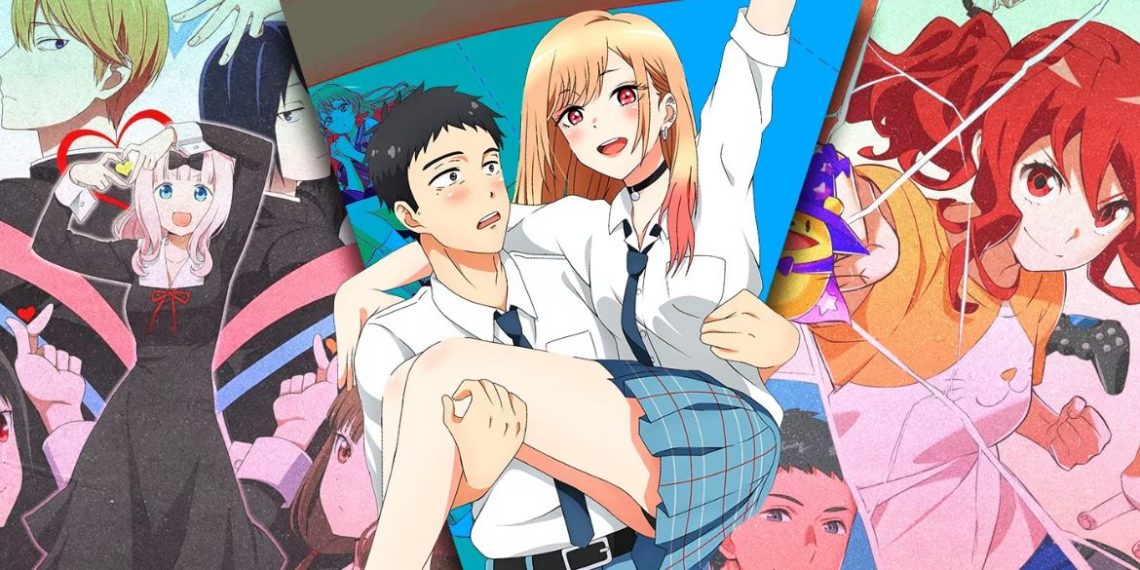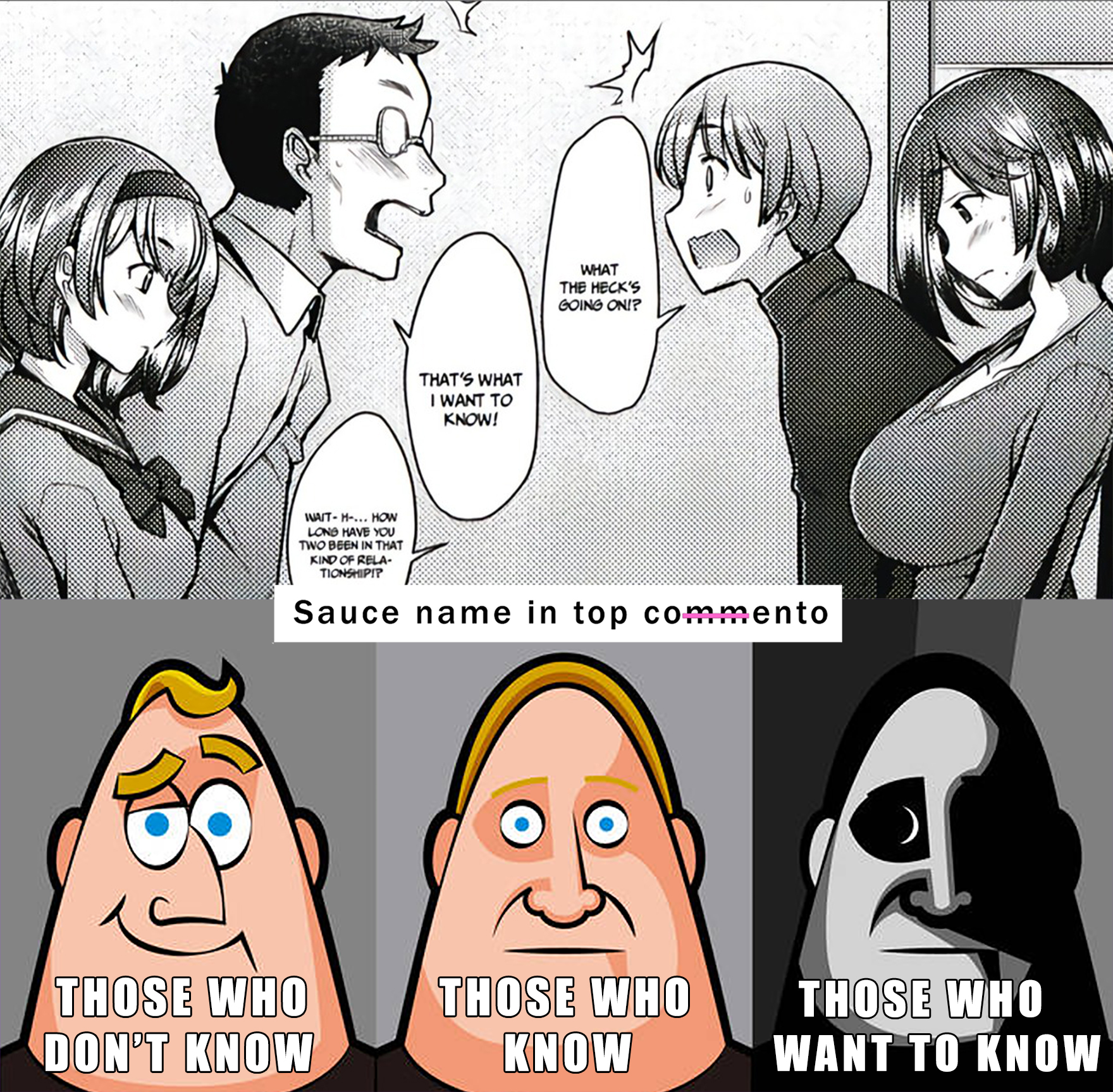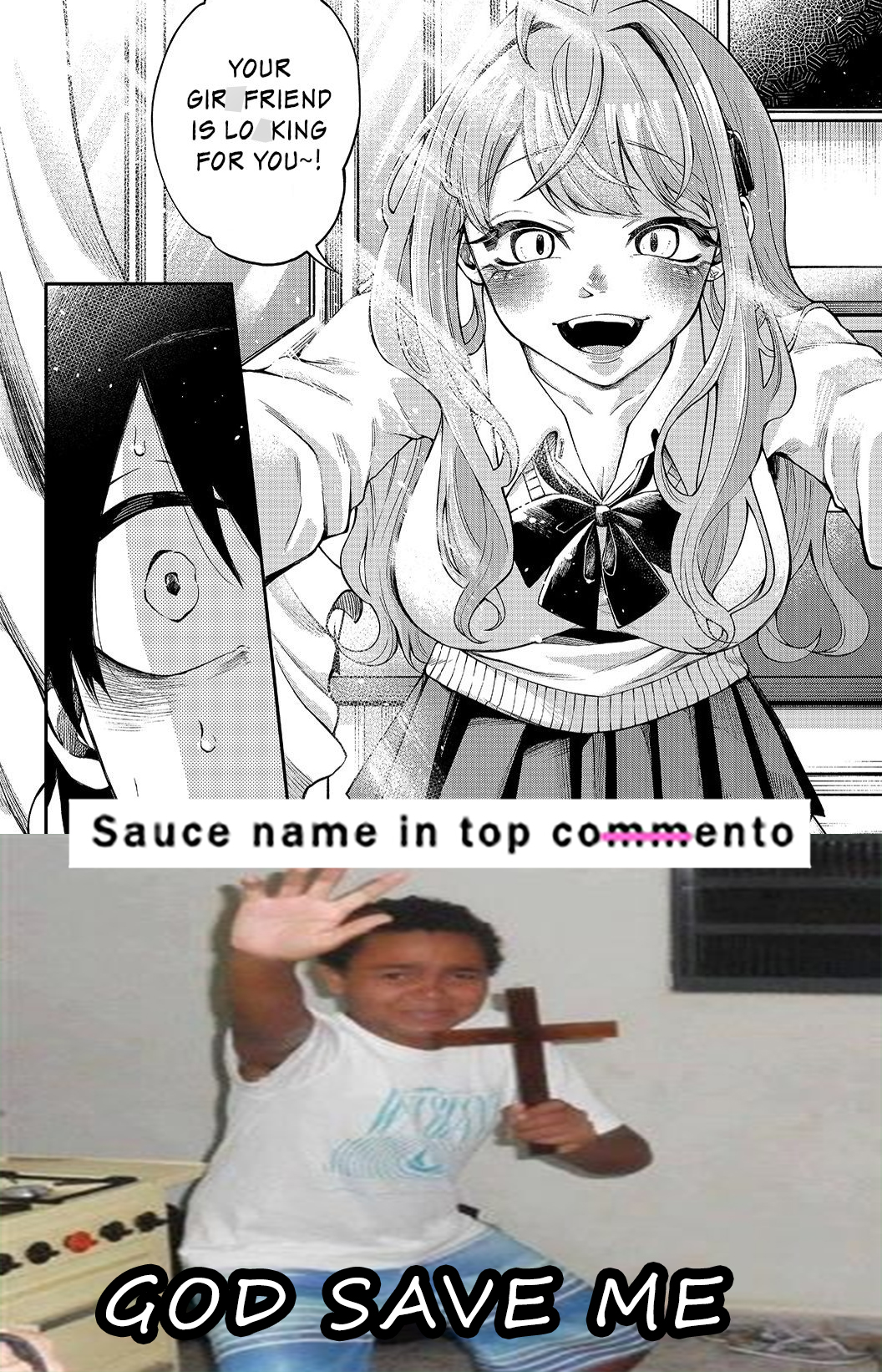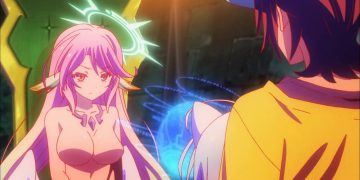Are you in the mood for that heart-fluttering feeling that only a great, swoon-worthy anime can deliver? Whether you’re feeling mushy, your heart races at the thought of someone special, or you’re contemplating reaching out to an old flame, it sounds like you’re craving a nice love story.
Whether it’s a thrilling “will they/won’t they?” romance that keeps you on the edge of your seat or a poignant tearjerker that leaves you with lingering emotions long after the credits roll, these enchanting anime tales will be your perfect companion as you journey through the world of love.
10. Tomo-chan Is a Girl!
In the heartwarming anime Tomo-chan Is a Girl!, we’re introduced to the inseparable childhood friends Tomo Aizawa and Junichirou Jun Kubota. Their bond is unbreakable, with Tomo harboring a deep, secret love for Jun that she’s held onto for years. However, there’s a twist: while Tomo sees Jun as more than just a friend, Jun only sees her as a beloved sister figure.
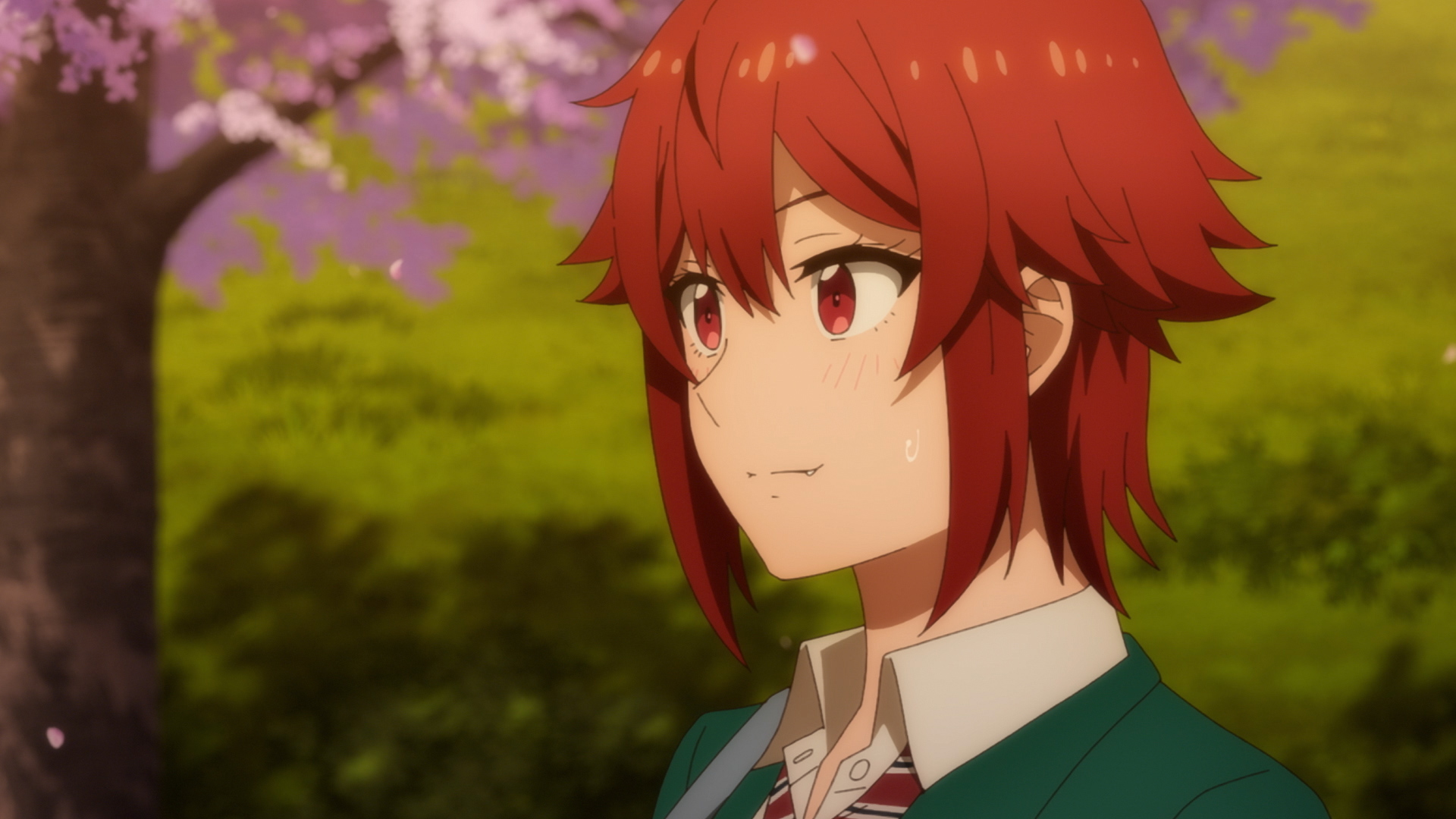
As they enter their first year of high school, Tomo bravely decides to confess her feelings to Jun. But alas, her heartfelt confession is misinterpreted, leaving Jun to believe that Tomo sees him solely as a brother. Determined to break through Jun’s obliviousness and make him see her as a romantic partner, Tomo looks on a series of hilarious and heartwarming antics to shake up their dynamic.
Through laughter, tears, and plenty of misunderstandings, Tomo-chan Is a Girl! follows Tomo’s journey as she tries to look the complexities of love and friendship. Will she finally succeed in winning Jun’s heart, or will their bond remain stuck in the friend zone forever? Join Tomo and Jun on this swoon-worthy adventure filled with love, laughter, and the joys of youthful romance.
Tomo-chan Is a Girl! is a popular Japanese web manga series written and illustrated by Fumita Yanagida. It started serialization on the Japanese webcomic site Pixiv in 2015 and quickly gained a large following. The series is known for its comedic and heartwarming story centered around its main characters.
The story revolves around Tomo Aizawa, a tough and athletic high school girl who is often mistaken for a boy due to her appearance and behavior. Her childhood friend, Junichirou Kubota (nicknamed Jun), has been by her side since they were kids. Despite Tomo’s tough exterior, she harbors romantic feelings for Jun. However, Jun is oblivious to Tomo’s feelings and only sees her as a buddy.
The manga follows Tomo’s attempts to convey her true feelings to Jun, often leading to comedic misunderstandings and awkward situations. Alongside Tomo and Jun, there are other characters who contribute to the story’s humor and emotional depth.
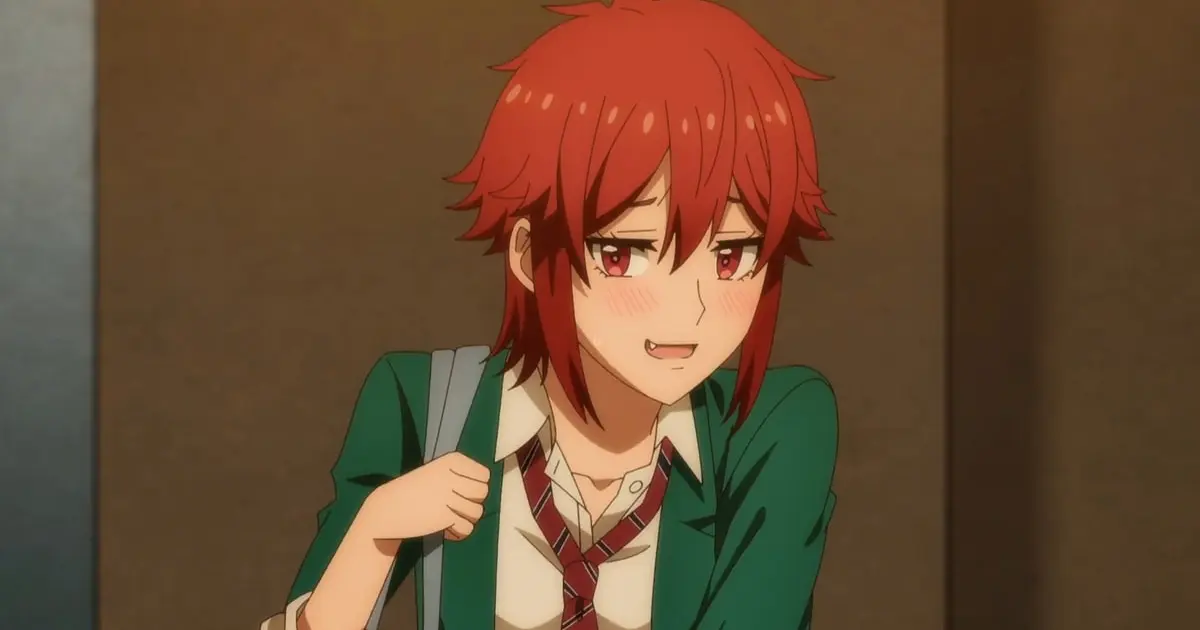
The main characters include Tomo Aizawa, who is the protagonist and an athletic girl often mistaken for a boy due to her blunt personality. Junichirou Kubota (Jun) is Tomo’s childhood friend, calm and easy-going, who remains oblivious to Tomo’s romantic feelings towards him.
Misuzu Gundou is another friend of Tomo and Jun, more perceptive and feminine compared to Tomo. Lastly, Carol Olston is a cheerful foreign exchange student who brings a lively dynamic to the group.
Tomo-chan Is a Girl! primarily follows the themes of friendship, unrequited love, and self-discovery. The series balances humor with moments of emotional sincerity as Tomo finds her feelings and relationships. The comedic elements arise from Tomo’s attempts to confess her feelings to Jun, only to be misunderstood or interrupted comically.
Fumita Yanagida’s art style is clean, and expressive, and suits the comedic tone of the series. Characters are drawn with distinct features and exaggerated expressions that enhance the humor.
The series has garnered widespread popularity both in Japan and internationally. It appeals to readers with its charming characters, relatable romantic tension, and humorous storytelling. Tomo-chan Is a Girl! has been praised for its endearing characters and ability to blend comedy with heartfelt moments.
Tomo-chan Is a Girl! is a delightful romantic comedy manga that follows themes of friendship and unrequited love in a light-hearted and entertaining manner. Fans of comedic romance will appreciate its witty dialogue, lovable characters, and engaging storyline. Whether you enjoy romance, comedy, or slice-of-life genres, this manga is worth checking out for its charming and relatable narrative.
9. My Dress-Up Darling
In the enchanting anime My Dress-Up Darling, viewers are treated to a visual feast of stunning animation and charming character designs, courtesy of Shinichi Fukuda’s masterful series adaptation. At the heart of the story is high schooler Wakana Gojou, a talented artisan with a passion for crafting exquisite Hina dolls, inspired by his beloved grandfather.
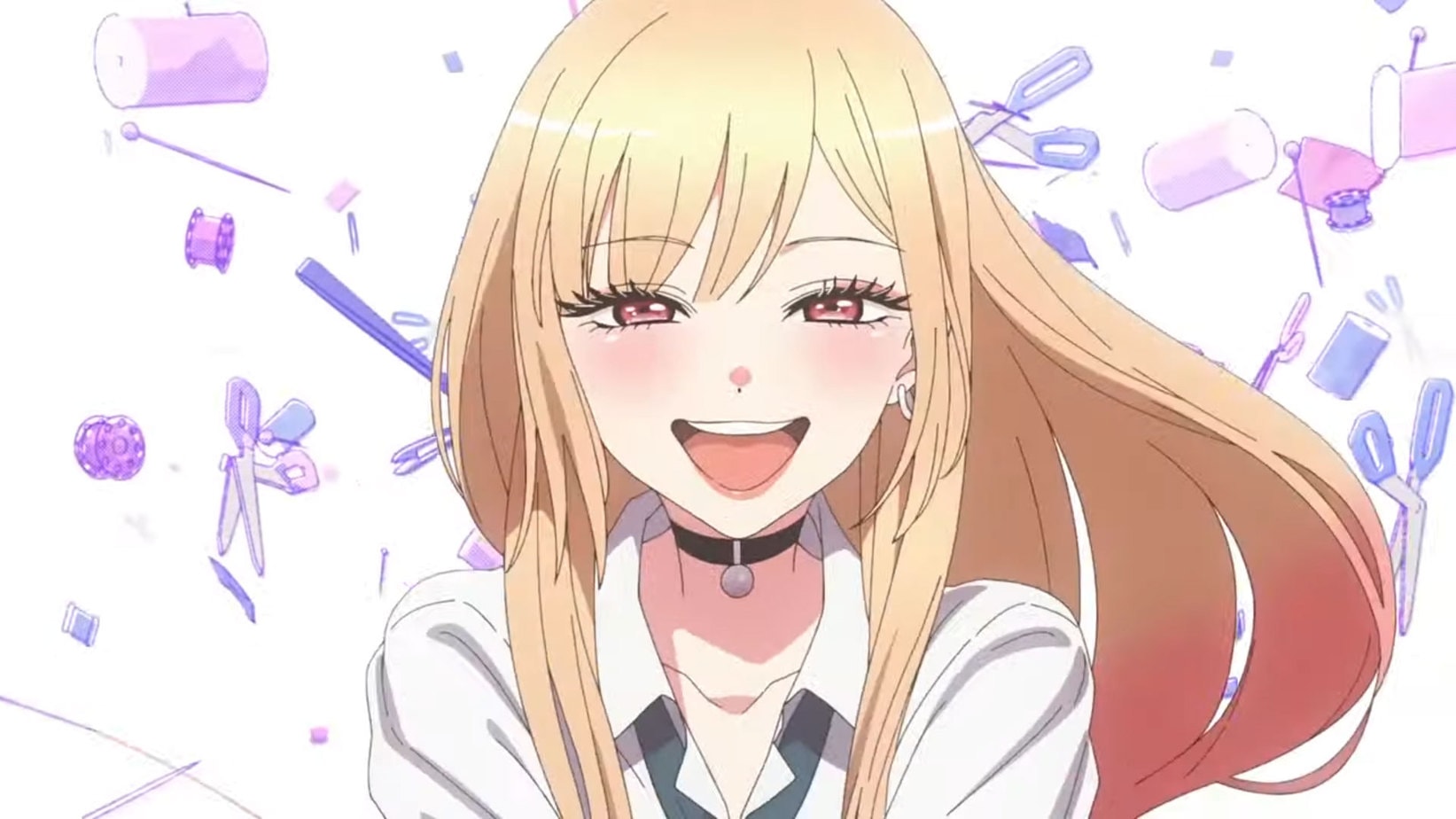
Despite his remarkable skill, Wakana keeps his hobby hidden from his classmates, fearing ridicule and misunderstanding. However, his carefully guarded secret is about to be revealed when he crosses paths with the fascinating Marin Kitagawa, a girl who exudes confidence, grace, and beauty in equal measure.
Thus begins their delightful journey in My Dress-Up Darling, as Wakana and Marin join forces, working side by side and gradually forming a deep bond. As they collaborate on various cosplay projects, their friendship blossoms into something more, with feelings of affection blooming between them.
“My Dress-Up Darling” (Sono Bisque Doll wa Koi wo Suru) is a popular Japanese manga series written and illustrated by Shinichi Fukuda. Serialized in Square Enix’s Young Gangan magazine since 2018, the series has gained significant attention for its unique premise and endearing characters.
The story follows the unlikely friendship and budding romance between Marin Kitagawa, a talented and popular high school girl admired for her beauty and outgoing personality, and Wakana Gojou, a reserved and skilled amateur doll maker. Wakana harbors a passion for creating intricate dolls but keeps this hobby a secret due to societal expectations and stereotypes.
When Wakana accidentally discovers Marin’s interest in cosplay and costume-making, he becomes intrigued and eventually coerces her into modeling his doll clothing creations. Despite their contrasting personalities, Marin and Wakana form a heartwarming bond through their shared passion for crafting and self-expression.
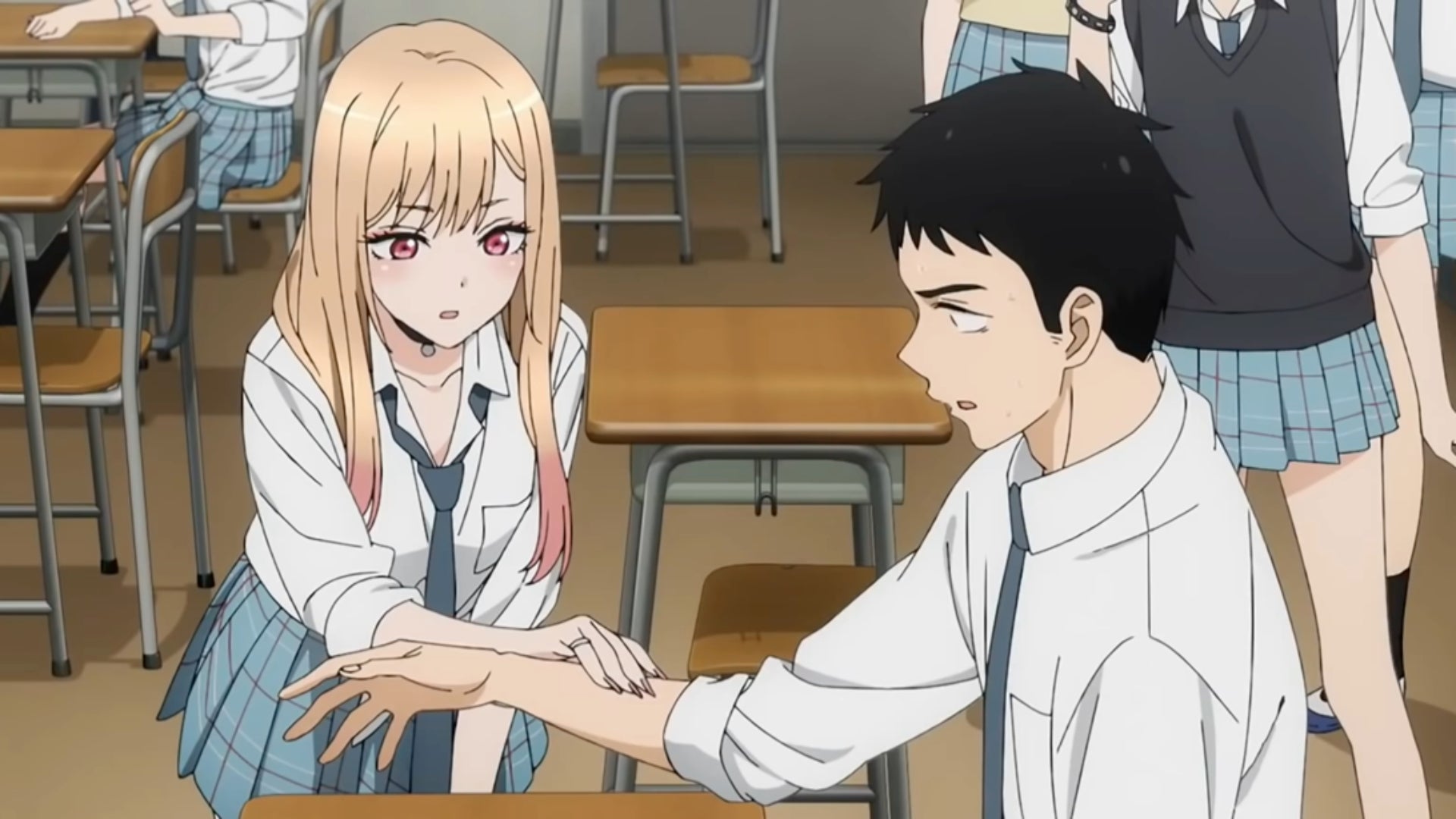
As their friendship deepens, romantic feelings begin to blossom, leading to emotional and humorous moments as they find their evolving relationship and the challenges of adolescence.
The main characters include Marin Kitagawa, a popular high school girl admired for her looks and cheerful demeanor, and Wakana Gojou, a talented amateur doll maker who keeps his hobby a secret from his peers due to fear of judgment. Supporting characters like Saijou, Wakana’s outgoing friend, and Nagisa Kashiwagi, Marin’s supportive best friend, add depth and humor to the story.
My Dress-Up Darling follows themes of friendship, creativity, self-discovery, and the courage to pursue one’s passions despite societal pressures. The series celebrates the joy of crafting and cosplay while delving into the character’s personal growth and emotional journeys.
Shinichi Fukuda’s art style is expressive and detailed, bringing the characters and their intricate creations to life. The manga features beautifully illustrated cosplay designs and doll outfits, enhancing the visual appeal of the story.
My Dress-Up Darling has received positive reviews for its engaging storyline, well-developed characters, and thematic depth. The series resonates with readers who appreciate its unique blend of romance, slice-of-life, and crafting elements. It has gained a dedicated fan base both in Japan and internationally.
My Dress-Up Darling is a charming and heartfelt manga that follows the themes of creativity, friendship, and romance through the lens of cosplay and doll-making. With its endearing characters, nice storyline, and beautiful artwork, the series offers an enjoyable and uplifting reading experience for fans of romance and slice-of-life genres. Whether you are interested in cosplay culture or simply appreciate a well-crafted romantic narrative, “My Dress-Up Darling” is a must-read manga that celebrates the power of self-expression and following one’s passions.
8. Komi Can’t Communicate
In the fascinating anime Komi Can’t Communicate, we’re introduced to the enigmatic Shouko Komi, whose ethereal beauty and graceful demeanor earn her the title of Madonna at the prestigious Itan Private High School. Despite her popularity, Shouko struggles with a major obstacle: a severe communication disorder that leaves her unable to interact with others effectively.
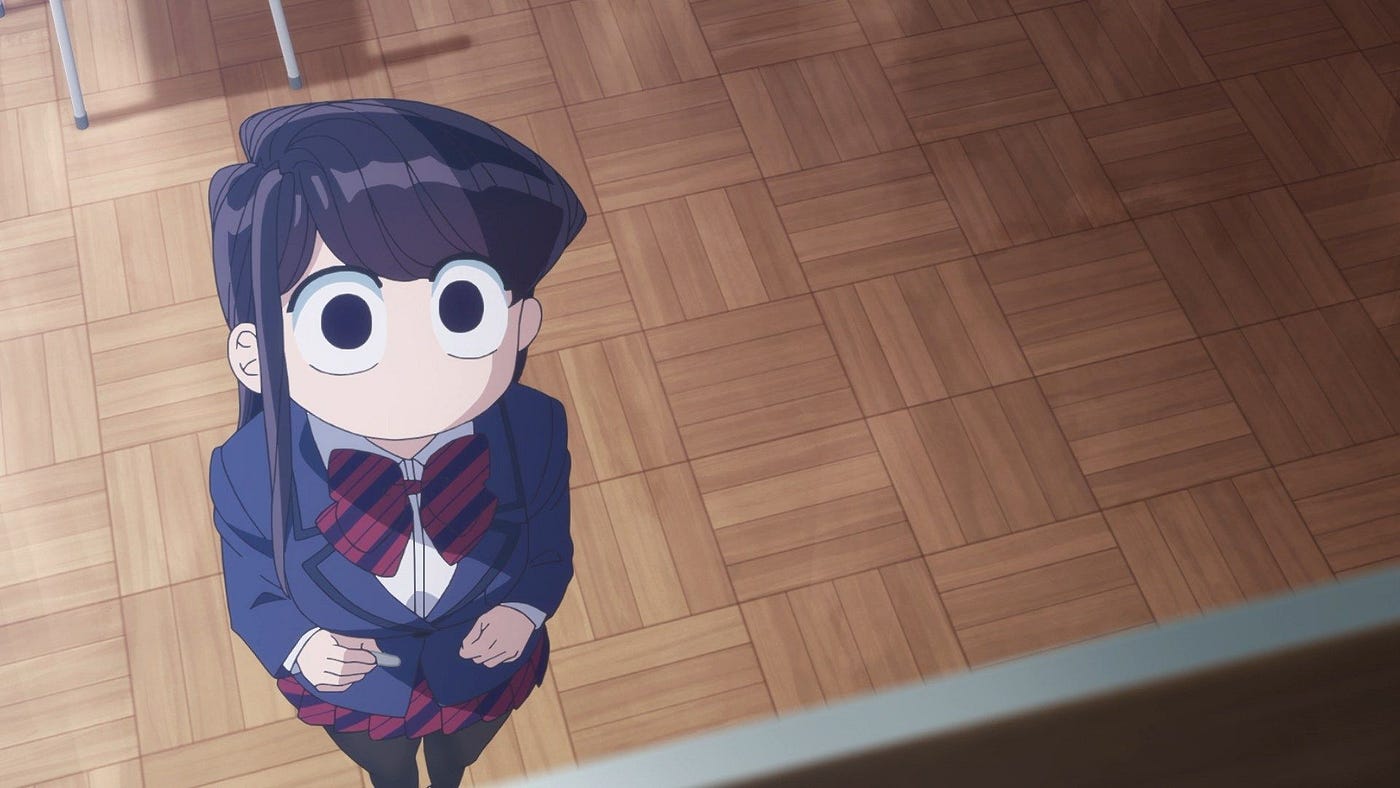
Enter Hitohito Tadano, a pragmatic young man who prefers to fly under the radar and avoid unnecessary trouble. However, fate has other plans for him when he finds himself seated next to Shouko in class, instantly making him a target for his classmates’ scrutiny and envy.
With its endearing premise and charming characters, Komi Can’t Communicate is a swoon-worthy anime that invites viewers into a world of friendship, empathy, and personal growth. Join Shouko and Hitohito on their touching journey as they defy the odds and discover the power of genuine human connection. This anime is truly a gem worth experiencing.
“Komi Can’t Communicate” (Komi-san wa, Komyushou desu.) is a popular Japanese manga series written and illustrated by Tomohito Oda. Since its serialization in 2016, the series has gained widespread acclaim for its endearing characters, heartfelt storytelling, and unique premise.
The story revolves around Shouko Komi, a high school girl admired by her peers for her beauty and grace. However, despite her outward appearance, Komi suffers from extreme social anxiety that makes it difficult for her to communicate effectively with others. She is unable to speak or express herself comfortably, leading to misunderstandings and isolation.
One day, Tadano Hitohito, an average and perceptive student, discovers Komi’s communication struggles and resolves to help her achieve her goal of making 100 friends. Together, they get on a journey to find social interactions and overcome Komi’s challenges, encountering a diverse cast of characters along the way.

As the story unfolds, readers witness Komi’s gradual growth and development as she learns to open up and connect with others, forming genuine friendships and discovering her own voice.
The main characters include Shouko Komi, a beautiful and reserved girl struggling with severe social anxiety, and Tadano Hitohito, her empathetic classmate who becomes her first friend and ally. Other classmates, such as Najimi Osana, a quirky and determined peer, contribute to Komi’s journey towards overcoming her communication barriers.
“Komi Can’t Communicate” follows themes of friendship, empathy, self-acceptance, and the importance of genuine connections. The series delicately portrays the challenges of social anxiety and the impact of loneliness, while emphasizing the transformative power of friendship and understanding.
Tomohito Oda’s art style is clean, expressive, and visually appealing. The characters are drawn with distinct designs that complement their personalities, and the artwork effectively conveys the characters’ emotions and interactions.
The manga has received widespread acclaim for its relatable characters, heartfelt storytelling, and thoughtful exploration of social anxiety and friendship. Its positive reception has led to various adaptations, including light novels, a television anime series, and merchandise, further highlighting its universal appeal and resonance with audiences of all ages.
Komi Can’t Communicate is a touching and uplifting manga that beautifully portrays the journey of overcoming social anxiety and finding genuine connections. With its relatable characters, heartfelt storytelling, and charming artwork, the series offers a compelling exploration of friendship, empathy, and self-discovery. Whether you are a fan of slice-of-life or coming-of-age narratives, “Komi Can’t Communicate” is a must-read manga that leaves a lasting impression with its heartfelt message and endearing characters.
7. Rascal Does Not Dream of Bunny Girl Senpai
It would be a crime not to include Hajime Kamoshida’s beloved series in the lineup of swoon-worthy anime. This gem of a novel-turned-anime captured the hearts of fans, leaving them eagerly anticipating a second season.
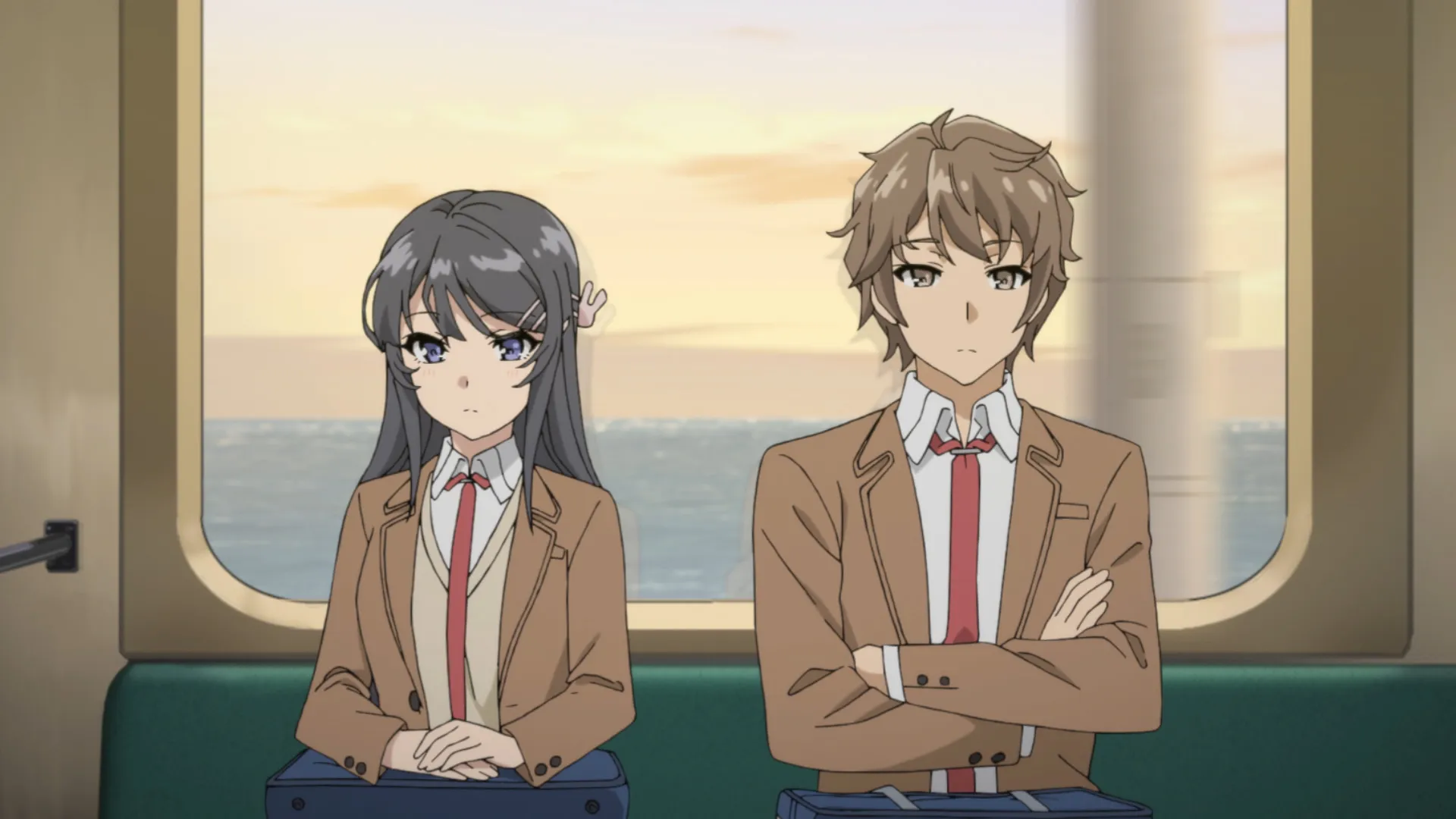
The story unfolds in a world where a mysterious phenomenon known as Puberty Syndrome wreaks havoc among teenagers, manifesting in bizarre and inexplicable ways. Among those familiar with its existence is Sakuta Azusagawa, who looks at the complexities of this unusual disorder within his school.
Enter Mai Sakurajima, a former child actress turned aloof high school senior. Despite her fame, Mai exudes an aura of unapproachability, leaving her isolated from her peers. It’s not until Sakuta crosses paths with her in the library, clad in a bunny girl costume, that their fateful encounter unfolds.
Amidst the trials and tribulations, the bond between Mai and Sakuta blossoms into a fascinating romance, earning them a well-deserved place as one of anime’s most swoon-worthy couples. With its intriguing premise and endearing characters, Rascal Does Not Dream of Bunny Girl Senpai is a must-watch for anyone craving a blend of romance, mystery, and heartwarming moments. Join Mai and Sakuta on their unforgettable journey as they look at the complexities of adolescence and love in this fascinating anime series.
“Rascal Does Not Dream of Bunny Girl Senpai” (Seishun Buta Yarou wa Bunny Girl Senpai no Yume wo Minai) is a Japanese light novel series by Hajime Kamoshida, later adapted into an anime that garnered significant popularity.
The story revolves around Sakuta Azusagawa, a high school student who encounters supernatural phenomena related to “puberty syndrome.” He meets Mai Sakurajima, a former child actress who inexplicably becomes invisible to most people but remains visible to Sakuta. Their investigation into Mai’s situation leads them to uncover the complexities of puberty syndrome and help others affected by it.
The characters are a key highlight of the series. Sakuta Azusagawa, though initially portrayed as blunt and sarcastic, harbors a caring nature and is driven by empathy to assist those around him. His relationship with Mai Sakurajima evolves from curiosity to a deep emotional connection, exploring themes of identity and fame.
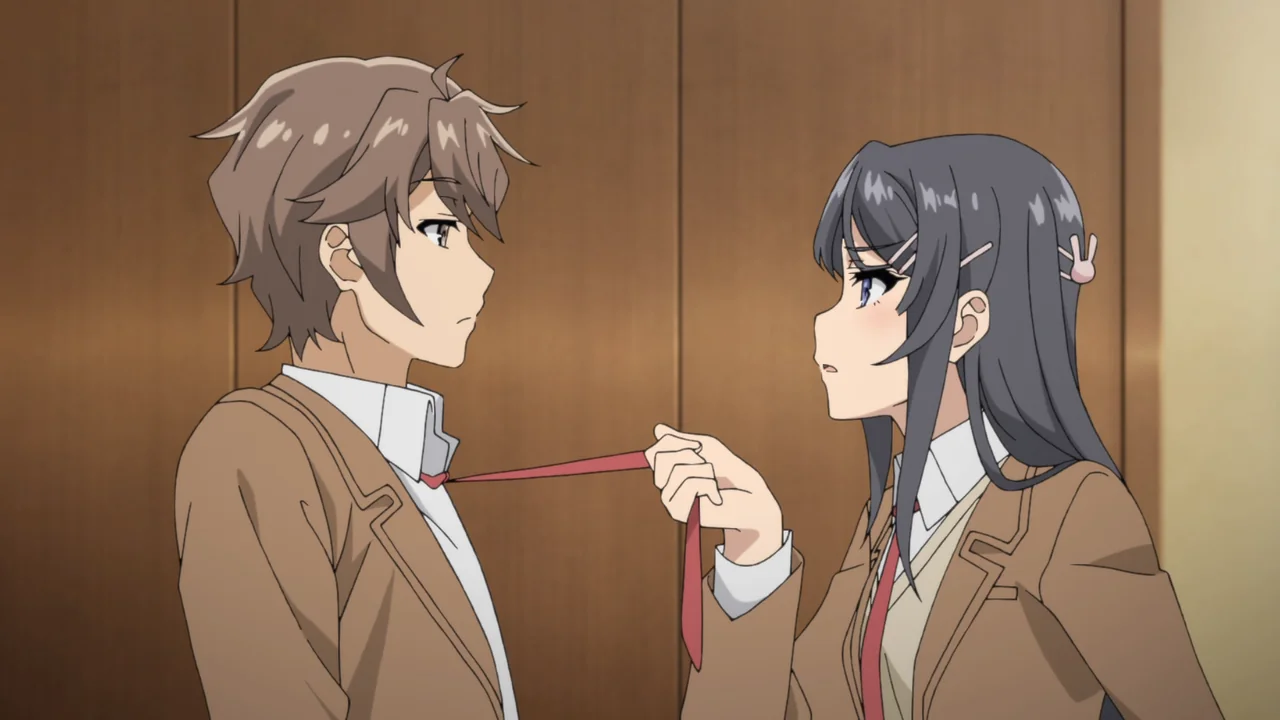
Mai Sakurajima’s decision to wear a bunny girl costume in public serves as a metaphor for her desire to break free from societal expectations and regain visibility in her own life. Her struggles with isolation and the pressures of fame are portrayed with depth and sensitivity.
Supporting characters like Kaede Azusagawa, Sakuta’s younger sister who experiences memory loss due to puberty syndrome, add emotional depth to the narrative. Tomoe Koga and Rio Futaba contribute to the exploration of puberty syndrome through scientific investigation, enriching the thematic exploration of adolescence and identity.
Throughout the series, themes of loneliness, social withdrawal, self-worth, and the desire for connection are follow through the lens of supernatural phenomena. Each story arc introduces a new character grappling with a different manifestation of puberty syndrome, providing poignant reflections on the challenges faced by young people.
Symbolism plays a significant role, with Mai’s bunny girl costume symbolizing her struggle for visibility and Kaede’s memory loss representing the impact of trauma on personal identity.
The anime adaptation of “Bunny Girl Senpai” by CloverWorks is visually striking, with fluid animation and a nice soundtrack by Fox Capture Plan. The series has made a lasting impact on the anime community, sparking discussions on mental health, adolescence, and societal expectations.
Rascal Does Not Dream of Bunny Girl Senpai is a compelling anime that transcends its supernatural premise to deliver a heartfelt exploration of youth, identity, and human connection. Its well-developed characters, thematic depth, and artistic execution make it a standout title in the genre of character-driven dramas.
6. Fireworks
In the fascinating anime film Fireworks, viewers are drawn into a tale of teenage romance with a mesmerizing twist. High schooler Norimichi Shimada finds himself caught in a love triangle with his classmate Nazuna Oikawa, with both he and his friend Yusuke Azumi harboring feelings for her.

As tensions rise in the classroom, the trio’s dynamic takes a dramatic turn during a swim race. Nazuna emerges victorious, prompting her to extend an invitation to Yusuke to watch fireworks together that night. However, Yusuke disappoints her by backing out, leaving Nazuna longing for Norimichi’s company instead.
But fate intervenes when Nazuna discovers a peculiar marble, sparking an unexpected turn of events. Showing it to Norimichi, he impulsively throws it into the water, expressing his wish to have won the race instead. To their astonishment, time reverses, granting Norimichi a second chance to seize victory.
With newfound determination, Norimichi triumphs in the race, setting off a chain of events that in ways they could never have imagined. As the story unfolds, viewers are swept up in a whirlwind of emotions, from heartwarming moments of romance to heartbreaking twists of fate.
Fireworks (also known as “Fireworks, Should We See It from the Side or the Bottom?”) is a manga series written by Iwai Shunji and illustrated by Makoto Fuugetsu. It is based on the 1993 Japanese live-action film of the same name, which was directed by Shunji Iwai. The manga adaptation provides a different perspective on the original story, focusing more on the characters’ emotions and relationships.
The story revolves around a group of teenage friends who become embroiled in a mysterious phenomenon involving fireworks. Nazuna, a quiet and enigmatic girl, is planning to run away from home with her boyfriend Norimichi. However, Norimichi and his friends discover that they have the ability to manipulate time through a strange phenomenon involving fireworks.

As Norimichi and his friends find the complexities of adolescence, friendships, and unrequited feelings, they grapple with the implications of altering time and the consequences of their decisions. The manga goes into themes of regret, longing, and the transient nature of youth.
Makoto Fuugetsu’s artwork in the “Fireworks” manga is notable for its expressive character designs and emotive illustrations. The use of shading and panel layouts enhances the emotional depth of the story, capturing the nuances of the characters’ interactions and inner turmoil.
The manga follows several themes common in coming-of-age narratives, such as youthful idealism, first love, and the desire for freedom. The motif of fireworks serves as a symbol of fleeting moments and the transient nature of time, reflecting the characters’ emotional journeys and the bittersweetness of adolescence.
The “Fireworks” manga adaptation offers a fresh take on the original film, providing deeper insights into the characters’ motivations and inner conflicts. While the manga retains the core elements of the film’s plot, it expands on certain aspects, allowing for a more introspective exploration of the characters’ psyches.
In terms of reception, the “Fireworks” manga has been well-received by fans of the original film and readers of romantic dramas. It effectively captures the nostalgia and melancholy associated with adolescence while offering a unique interpretation of the story through the lens of manga storytelling.
Fireworks” is an amazing manga adaptation that goes into themes of youth, love, and the passage of time. With its emotive artwork and character-driven narrative, the manga provides a poignant exploration of adolescent emotions and relationships. Fans of romantic dramas and coming-of-age stories will find “Fireworks” to be a compelling and heartfelt read.
5. Fruits Basket
In the swoon-worthy anime, Fruits Basket stands out as a fascinating and unconventional gem that has captured the hearts of fans since its inception. Originally introduced through the manga in 1998 and later adapted into an anime series in 2001, Fruits Basket offers a refreshing twist on the traditional romance genre.
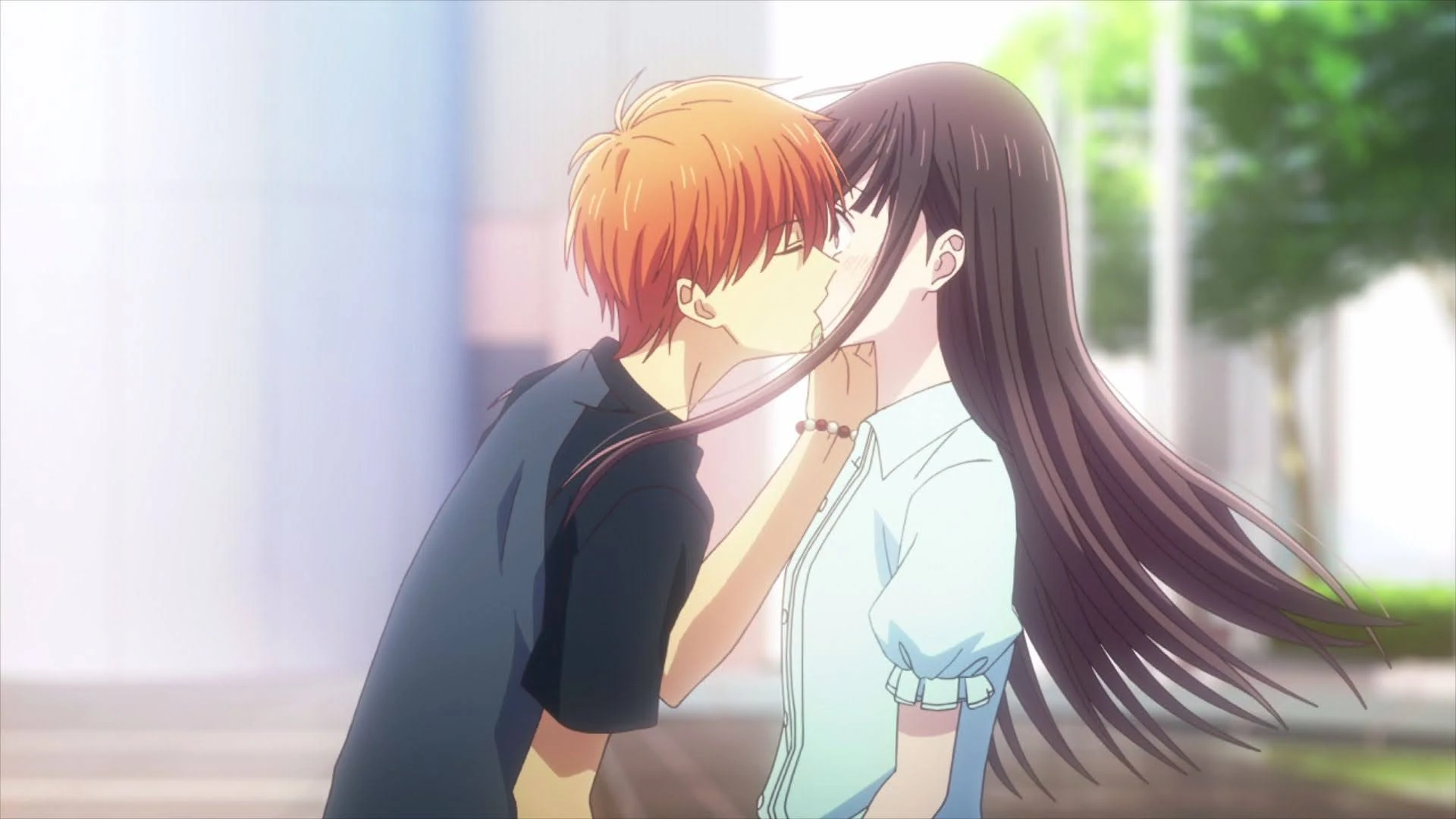
At the center of the story is 16-year-old Tohru Honda, whose life takes a tumultuous turn following a tragic family loss. Determined to forge her own path, Tohru decides to leave her old life behind and sets up camp in a tent. Little does she know, her makeshift home sits on private land owned by the enigmatic Soma clan.
With its compelling characters, heartfelt storytelling, and sprinkling of magical realism, Fruits Basket offers a poignant and unforgettable viewing experience that transcends the boundaries of traditional romance. Join Tohru and the Soma family on their extraordinary journey as they look the joys and challenges of life, love, and self-discovery in this truly swoon-worthy anime series.
“Fruits Basket” (often abbreviated as “Furuba”) is a beloved Japanese manga series written and illustrated by Natsuki Takaya. It was serialized from 1998 to 2006 in the magazine Hana to Yume and later collected into 23 volumes. The series gained immense popularity and was adapted into multiple anime series, including a recent reboot that closely follows the manga’s storyline.
The story follows Tohru Honda, a high school girl who, after tragically losing her mother, ends up living in a tent in the woods. She is discovered by the enigmatic Soma family, who offer her a place to stay in their home.
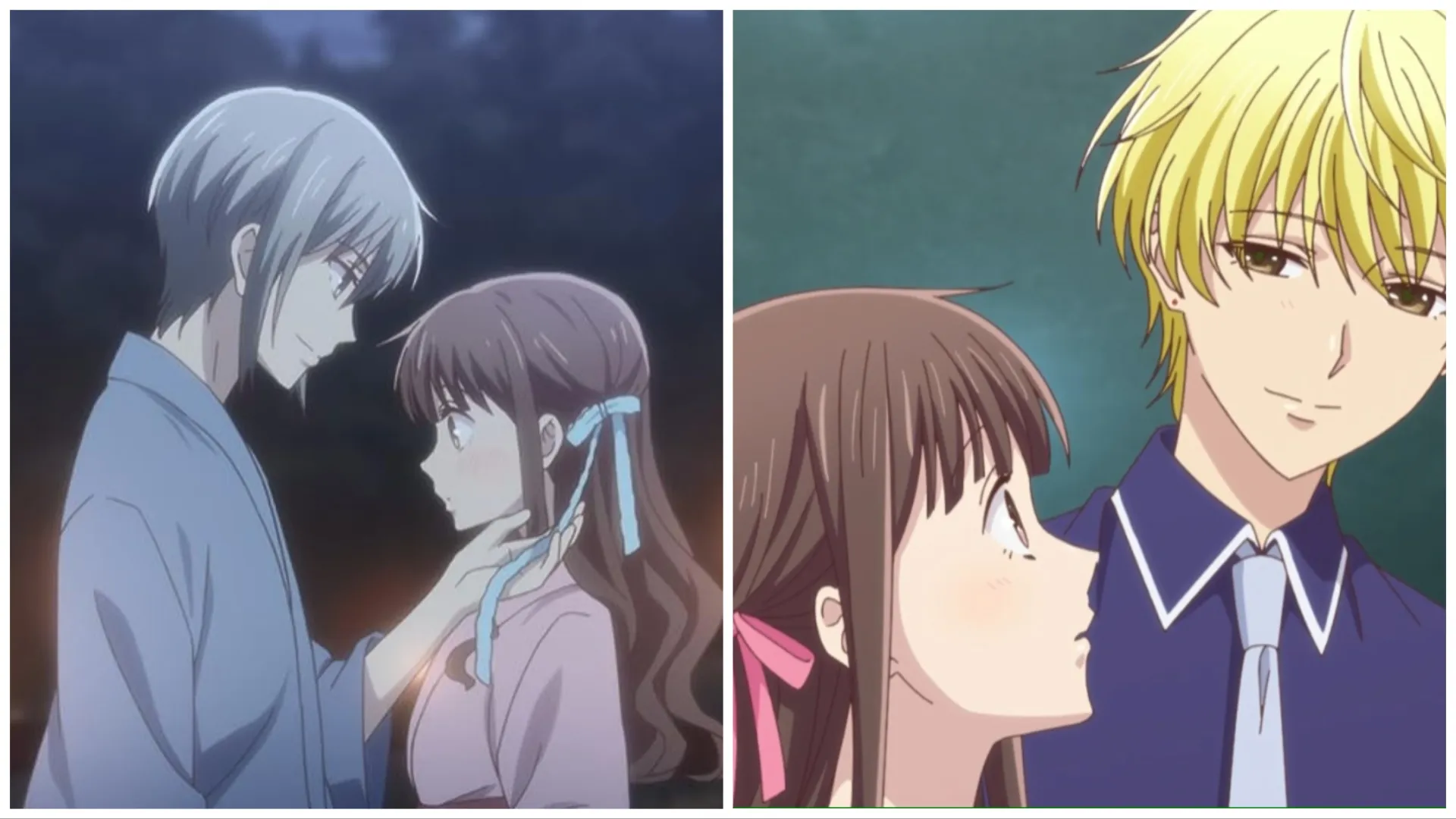
Tohru soon learns that the Somas have a secret: they are cursed by the Chinese zodiac animals. Twelve members of the family are possessed by the spirits of the zodiac, and they transform into their respective animals when hugged by someone of the opposite gender.
As Tohru becomes entwined with the lives of the Somas, she discovers their deep-rooted family secrets and learns about the pain and emotional scars each member carries due to the curse. Despite the challenges, Tohru’s kindness and empathy gradually bring healing to the fractured Soma family.
“Fruits Basket” follows the themes of acceptance, family dynamics, emotional healing, and the impact of trauma on individuals. The curse serves as a metaphor for the character’s internal struggles and emotional barriers, highlighting the importance of empathy and understanding in overcoming personal obstacles.
The series also goes into the concept of self-identity and the journey of self-acceptance. Many characters grapple with their own sense of worth and purpose, and Tohru’s influence often helps them confront their insecurities and forge meaningful connections.
In addition to the original manga, “Fruits Basket” received an anime adaptation in 2001, which followed the manga’s storyline but diverged towards the later arcs. In 2019, a new anime adaptation titled “Fruits Basket: The Final” was produced, faithfully adapting the entire manga series. The reboot has been praised for its faithfulness to the source material and emotional impact.
Fruits Basket has garnered widespread acclaim for its deep characters, poignant storytelling, and heartfelt exploration of human emotions. It continues to resonate with audiences worldwide, earning its place as a classic in the genre of supernatural romance and slice-of-life manga.
4. Toradora!
In the delightful and swoon-worthy anime Toradora!, viewers are introduced to the unlikely duo of Ryuuji Takasu and Taiga Aisaka, whose contrasting personalities and appearances belie their deep connection. Ryuuji, with his intimidating delinquent-like exterior, is actually a kind-hearted high schooler with a knack for household chores. Meanwhile, Taiga, often underestimated due to her petite size, earns the moniker Palmtop Tiger for her fierce personality and penchant for carrying a wooden katana.

Their worlds collide in a moment of embarrassment, leading Ryuuji to discover Taiga’s hidden sweetness and her secret crush on his best friend, the charming and popular Yuusaku Kitamura. However, the plot thickens when Ryuuji confesses his own feelings for Minori Kushieda, Taiga’s bubbly and outgoing best friend.
With its endearing characters, witty humor, and heartfelt moments, Toradora! has earned its place as a beloved classic in the anime, fascinating audiences with its delightful tale of love and friendship. Join Ryuuji and Taiga on their unforgettable journey as they look the complexities of adolescence and romance in this truly swoon-worthy anime series.
“Toradora!” is a popular romantic comedy anime series based on the light novel by Yuyuko Takemiya. The anime adaptation was produced by J.C. Staff and aired from October 2008 to March 2009, consisting of 25 episodes. Here’s a detailed review and information about this beloved series:
“Toradora!” revolves around the lives of two high school students, Ryuuji Takasu and Taiga Aisaka. Despite their contrasting personalities, they form an unlikely alliance to help each other pursue their respective romantic interests. Ryuuji is a kind-hearted but misunderstood boy with a stern appearance, while Taiga is a small-statured girl with a fierce personality.
Ryuuji has a crush on Taiga’s best friend, Minori Kushieda, while Taiga harbors feelings for Ryuuji’s best friend, Yuusaku Kitamura. The story begins with Ryuuji and Taiga agreeing to assist each other in their love pursuits, leading to numerous comedic and heartfelt situations as they finds the complexities of high school life.
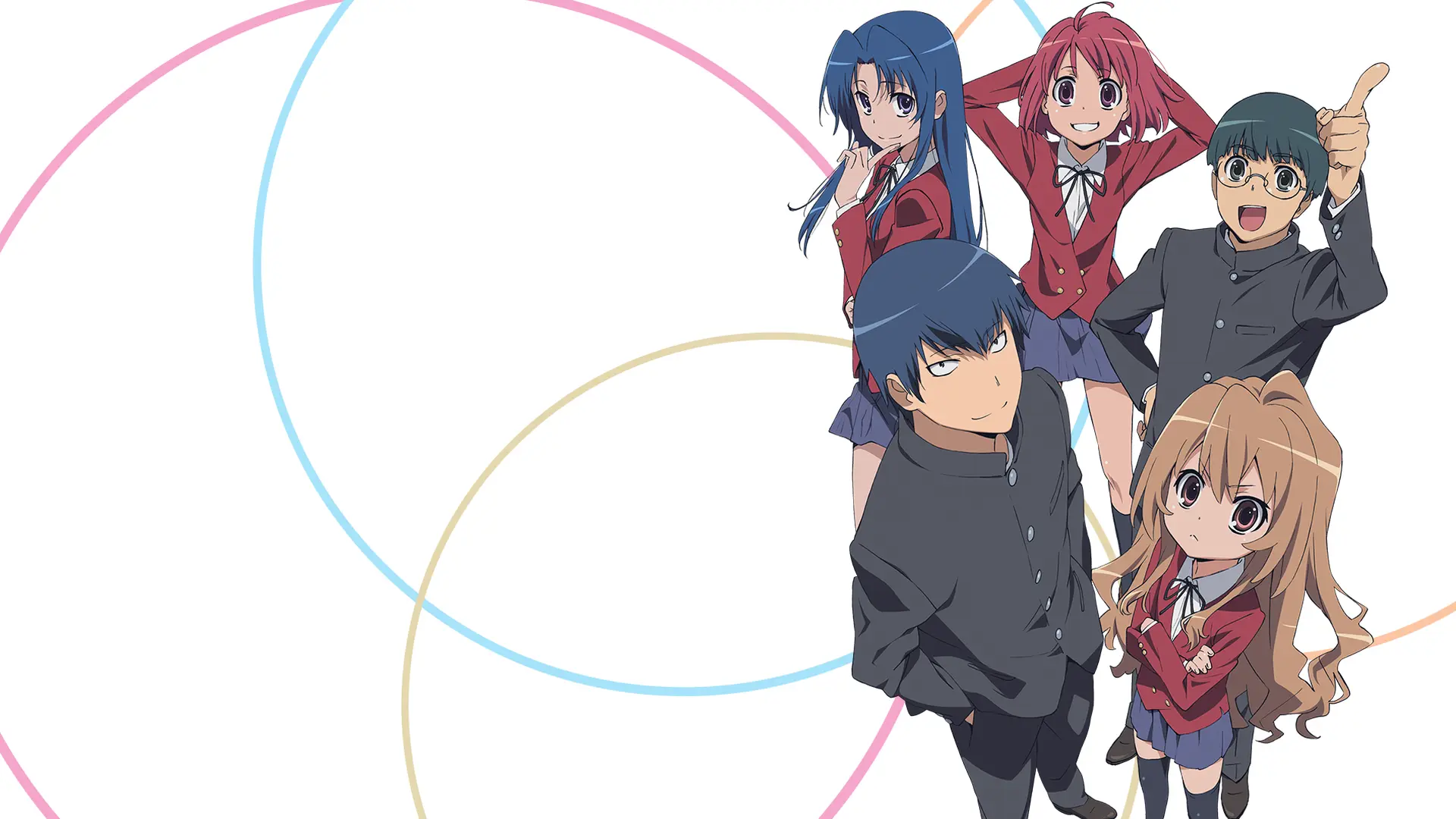
The strength of “Toradora!” lies in its well-developed characters. Ryuuji and Taiga undergo significant growth throughout the series, gradually revealing deeper layers of their personalities beyond their initial impressions. Supporting characters like Minori and Yuusaku also add depth to the narrative, each struggling with their own aspirations and emotions.
The anime follows the themes of friendship, love, and personal identity. It goes into the complexities of relationships and the challenges of understanding one’s feelings amidst adolescence. Through its characters, “Toradora!” offers poignant reflections on self-discovery and the importance of genuine connections.
Visually, “Toradora!” boasts vibrant animation with expressive character designs. The artwork effectively conveys both the comedic and emotional aspects of the story. The soundtrack, composed by Yukari Hashimoto, complements the narrative beautifully, enhancing pivotal moments with its evocative melodies.
One of the standout qualities of “Toradora!” is its ability to evoke genuine emotions from its audience. The series adeptly balances humor and drama, ensuring that poignant moments resonate deeply with viewers. The emotional payoff of character arcs and relationships is immensely satisfying, making it a memorable viewing experience.
Toradora!” has garnered widespread acclaim for its engaging story and endearing characters. It remains a beloved title within the anime community, often praised for its genuine portrayal of teenage relationships and emotional depth. The series continues to attract new viewers and has cemented its place as a classic in the romantic comedy genre.
Toradora!” is a nice anime that excels in storytelling, character development, and emotional resonance. With its charming protagonists, heartfelt narrative, and compelling themes, it’s a must-watch for fans of romance and comedy alike. Whether you’re drawn to its witty humor or touching moments, “Toradora!” offers a delightful journey that leaves a lasting impression.
3. I’m in Love with the Villaniess
Step into the enchanting world of I’m in Love with the Villainess, where reality and fantasy blur in this swoon-worthy anime tale. Meet Rei Oohashi, a weary office worker who finds solace in the virtual of her favorite otome game, Revolution. By night, she transforms into the charming heroine Rae Taylor, looking at the romantic intrigues of Bauer Kingdom’s Royal Academy.
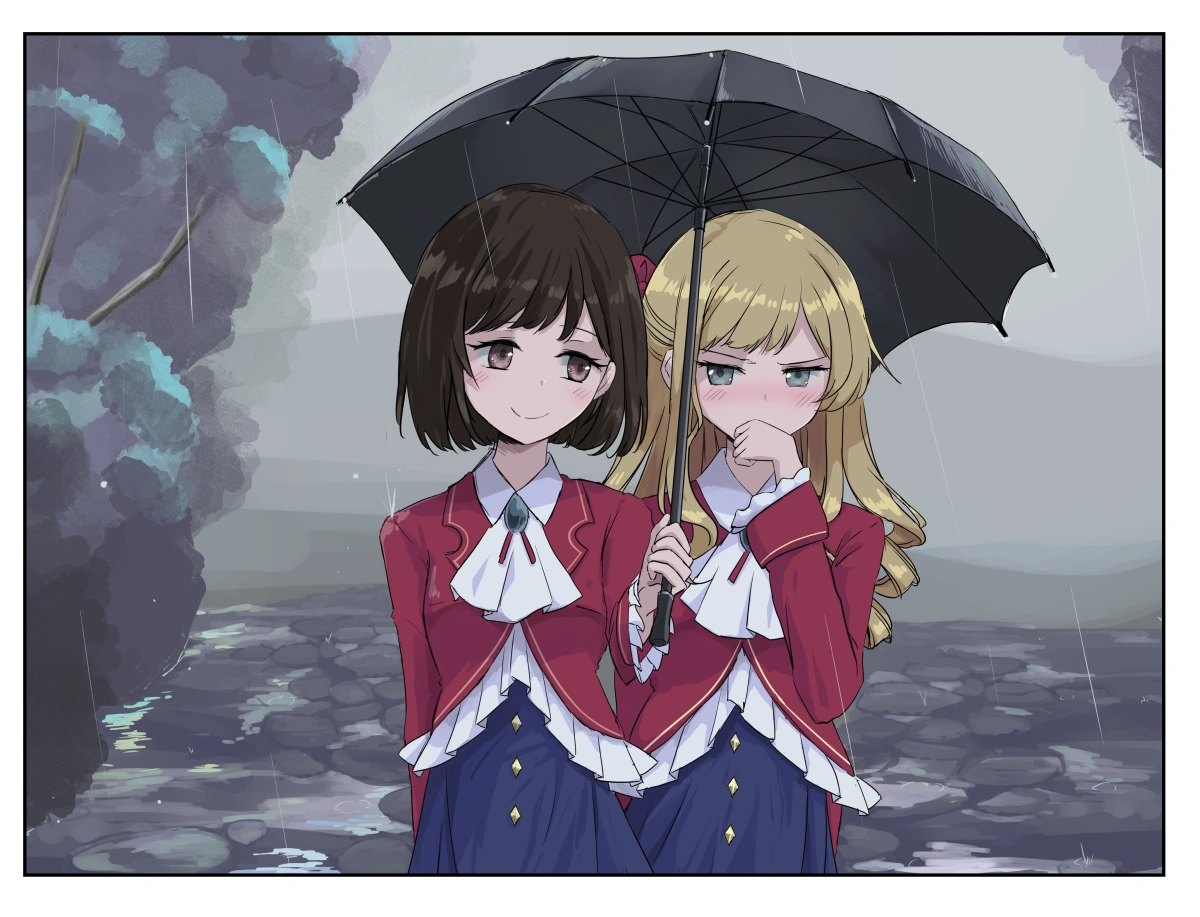
But unlike typical players who pursue the game’s male love interests, Rei finds herself fascinated by the game’s villainess, Claire Francois. Obsessed with Claire’s allure and complexity, Rei pours her heart and soul into winning over this virtual antagonist.
However, fate takes a dramatic turn when Rei’s exhaustion reaches its breaking point, leading to her untimely passing. To her astonishment, Rei awakens in the Revolution as Rae Taylor, greeted by none other than her beloved Claire.
I’m in Love with the Villainesst is a spellbinding anime that transcends the boundaries of reality, inviting viewers on a journey of love, self-discovery, and the power of unwavering devotion. Join Rae as she look the twists and turns of the Revolution, forging a path to romance that defies all expectations and captures the hearts of viewers around the world.
“I’m in Love with the Villainess” (Watashi no Oshi wa Akuyaku Reijou.) is a Japanese light novel series written by Inori and illustrated by Hanagata. The story falls into the genre of isekai (another world) and yuri (romance between female characters). It gained popularity and was adapted into a manga and later an anime series. Here’s a detailed review and information about this nice series:
The story follows a young woman named Rei Taylor who dies and is reincarnated into the world of an otome game she used to play. In this game world, she wakes up as the antagonist, Claire Francois, the daughter of a noble family destined for a tragic end. Realizing her fate, Rei decides to change her role and avoid the path of destruction set for Claire.
Rei’s plan involves befriending the game’s protagonist, Celia, and forming a romantic relationship with her instead of becoming her enemy. As Rei interacts with various characters and find the game’s world, she discovers unexpected friendships and love interests, all while challenging the predetermined storyline.
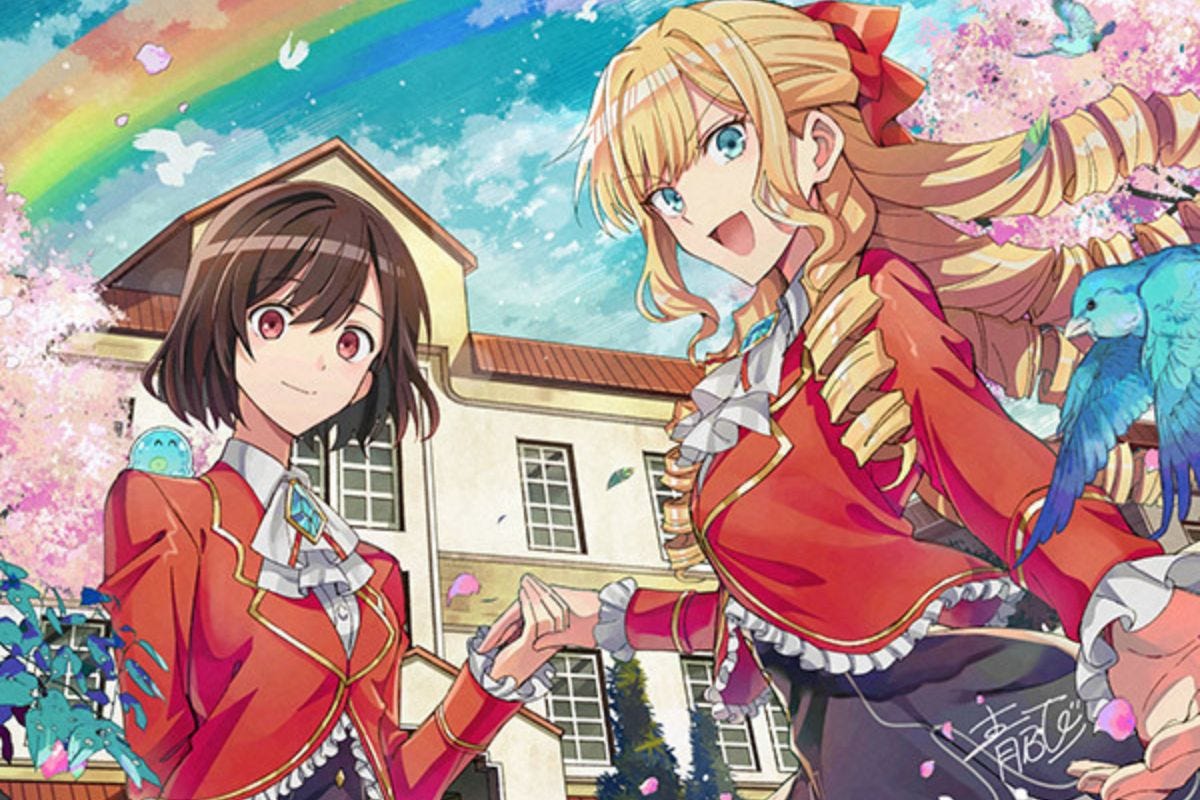
“I’m in Love with the Villainess” excels in character development, particularly with Rei’s growth and relationships. Rei’s determination to rewrite her fate drives her to follow her feelings and desires, leading to personal revelations and emotional depth. The interactions between Rei, Celia, and other characters are nuanced and contribute to the story’s richness.
The series follows the themes of self-discovery, redemption, and the fluidity of identity. Rei’s journey to defy her role as a villainess and find happiness challenges societal expectations and conventions within the game world. The story also highlights the importance of genuine connections and understanding beyond superficial appearances.
A notable aspect of “I’m in Love with the Villainess” is its focus on LGBTQ+ romance, specifically the relationship between Rei and Celia. The series handles their romantic development with care and authenticity, portraying their feelings with depth and sincerity. The representation of queer characters in a fantasy setting adds a refreshing dimension to the story.
The manga adaptation of “I’m in Love with the Villainess” features expressive artwork that brings the characters and settings to life. The illustrations effectively convey the emotions and dynamics between the characters, enhancing the storytelling experience. The anime adaptation further expands the visual world of the light novel, offering fans a new way to immerse themselves in Rei’s story.
The series has received positive feedback from readers and viewers for its engaging premise, compelling characters, and inclusive themes. It has resonated with fans of isekai, yuri, and romance genres alike, attracting a dedicated following. The success of “I’m in Love with the Villainess” underscores the growing demand for diverse and nuanced narratives within anime and light novels.
“I’m in Love with the Villainess” is a nice series that deftly combines fantasy, romance, and character-driven storytelling. Through Rei’s journey of self-discovery and redemption, the series challenges conventions and celebrates the power of love and authenticity. Whether you’re drawn to its unique premise or heartfelt romance, this series offers a delightful exploration of identity and relationships within a compelling game world.
2. Kaguya-sama: Love is War
Welcome to the prestigious Shuchiin Academy, where the elite of Japan’s wealthiest and most successful families converge, alongside the nation’s brightest young minds. At the pinnacle of this academic powerhouse are Miyuki Shirogane, the Student Council President, and Kaguya Shinomiya, the Vice President—two brilliant individuals destined for greatness.
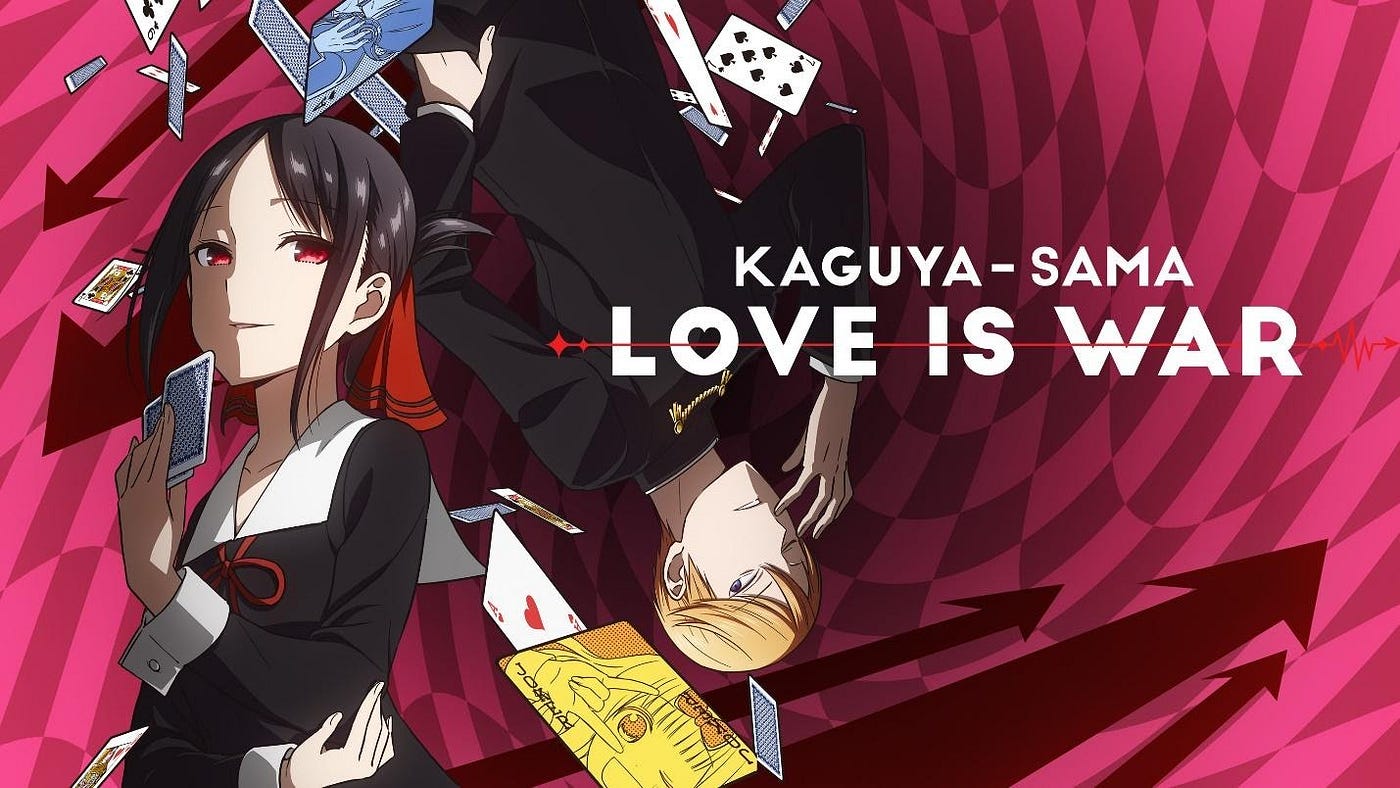
Despite their undeniable chemistry and the world’s insistence on their compatibility, Miyuki and Kaguya find themselves locked in a battle of wits fueled by pride and narcissism. Convinced that the first to confess their feelings would be at a disadvantage, these two geniuses look on a series of hilariously elaborate schemes and mind games to outmaneuver each other and emerge victorious in the game of love.
So buckle up and prepare for a wild ride as Miyuki and Kaguya go head-to-head in the ultimate battle of love and pride. Because in the Kaguya-sama: Love is War, victory is sweet—but the road to romance is anything but straightforward.
“Kaguya-sama: Love is War” (Kaguya-sama wa Kokurasetai) is a popular romantic comedy anime and manga series written and illustrated by Aka Akasaka. The story is known for its witty humor, clever plot twists, and charming characters. Below is a detailed review and information about this delightful series:
Kaguya-sama: Love is War revolves around the romantic tension between the two main characters, Miyuki Shirogane and Kaguya Shinomiya, who are both highly intelligent and competitive students attending the prestigious Shuchiin Academy. Despite harboring feelings for each other, they are too proud to confess their love, believing that the one who confesses first will lose in the game of love.
Thus, Miyuki and Kaguya engage in a series of mind games and elaborate schemes to trick the other into confessing. Their strategies range from psychological warfare to strategic manipulation of their surroundings and classmates. As their comedic battles unfold, other characters, including their friends Chika Fujiwara and Yuu Ishigami, become involved in their romantic escapades.
The series thrives on its strong character dynamics. Miyuki Shirogane is the student council president and a diligent, responsible young man from a modest background. Kaguya Shinomiya is the vice president and hails from a wealthy and prestigious family. Their contrasting personalities and prideful nature lead to hilarious misunderstandings and interactions.

Chika Fujiwara, the cheerful and somewhat oblivious secretary of the student council, adds a lighthearted and unpredictable element to the story. Yuu Ishigami, the treasurer, provides a more cynical and down-to-earth perspective, often serving as the voice of reason amidst the chaos.
Kaguya-sama: Love is War follows the themes of love, pride, and vulnerability. The series cleverly subverts traditional romantic tropes by focusing on the psychological battle of wills between its protagonists. The humor derives from their absurdly convoluted schemes and the exaggerated reactions to their misunderstandings.
The series also goes into the emotional struggles and insecurities beneath the characters’ competitive facades, revealing their genuine desires for connection and intimacy.
Aka Akasaka’s distinctive art style complements the story perfectly, with expressive character designs and dynamic panels that enhance comedic timing and emotional depth. The anime adaptation faithfully captures the charm and energy of the manga, utilizing vibrant animation and voice acting to bring the characters to life.
“Kaguya-sama: Love is War” has received widespread acclaim for its innovative premise, sharp writing, and memorable characters. It has garnered a dedicated fanbase both in Japan and internationally, leading to multiple seasons of the anime adaptation and spin-off manga series.
The series has been praised for its comedic timing, character development, and ability to balance humor with genuine emotional moments. It has become a cornerstone of the romantic comedy genre, appealing to audiences seeking clever storytelling and engaging relationships.
Kaguya-sama: Love is War” is a standout romantic comedy series that offers a refreshing take on the genre. With its intelligent humor, endearing characters, and compelling romantic tension, the series captivates viewers with its playful yet heartfelt exploration of love and rivalry. Whether you’re a fan of romantic comedies or simply enjoy clever storytelling, “Kaguya-sama: Love is War” is a must-watch anime that delivers laughs and heart in equal measure.
1. My Happy Marriage
In the poignant anime My Happy Marriage, we follow the journey of Miyo Saimori, a young woman whose life has been marred by tragedy and hardship. Born into an arranged marriage and cast aside following her mother’s death, Miyo finds herself relegated to the role of a lowly servant in her own home, overshadowed by her stepsister Kaya’s favoritism.
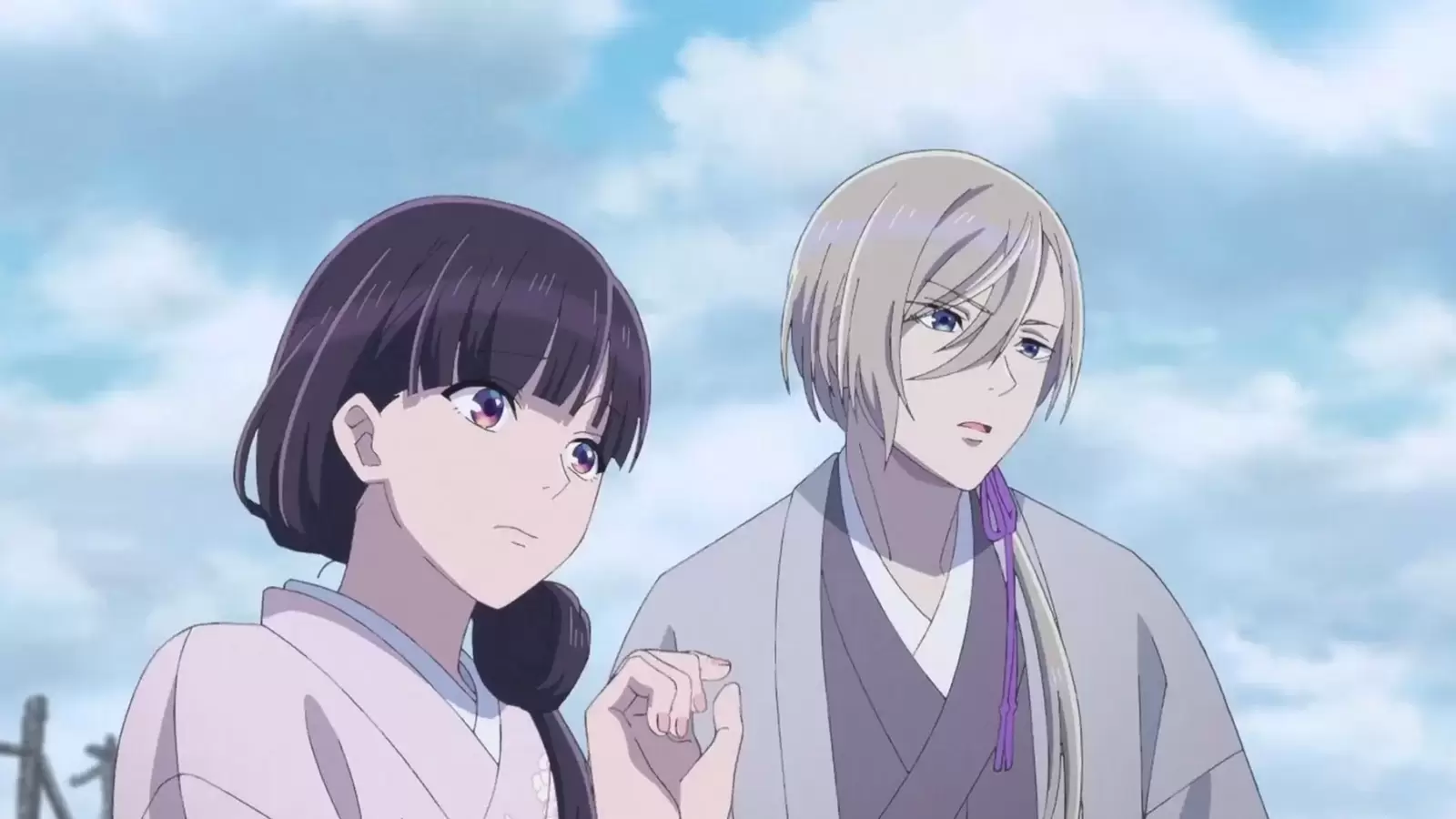
Hopeless and resigned to her fate, Miyo’s prayers for a change in fortune are answered when her father reveals his plan to marry her off to Kiyoka Kudou, the formidable head of the esteemed Kudou family. Rumored to be cold and heartless, Miyo braces herself for a life of misery and despair.
As their relationship blossoms, My Happy Marriage unfolds as a heartwarming tale of redemption and healing. Through Kiyoka’s unwavering support and affection, Miyo learns to overcome her past traumas and embrace a newfound sense of hope and happiness.
Prepare to be swept away by the touching story of Miyo and Kiyoka as they find solace and serenity in each other’s arms in this truly swoon-worthy anime.
“My Happy Marriage” is a Japanese manga series written and illustrated by Maki Enjoji. It falls within the genre of josei (targeted towards adult women) and romance. The story follows the life and romantic journey of its main protagonist, Chiwa Takanashi, as she finds the complexities of marriage and relationships. Here’s a detailed review and information about this nice manga series:
The manga begins with Chiwa Takanashi, a hardworking office worker struggling to make ends meet due to financial difficulties caused by her father’s debts. To resolve her financial issues, Chiwa agrees to an arranged marriage with Hokuto Mamiya, the president of the company where she works.
Initially, their marriage is purely transactional, with both Chiwa and Hokuto viewing it as a means to an end. However, as they start living together and facing various challenges, their relationship gradually evolves. Chiwa discovers unexpected facets of Hokuto’s personality and becomes drawn to him beyond their initial arrangement.
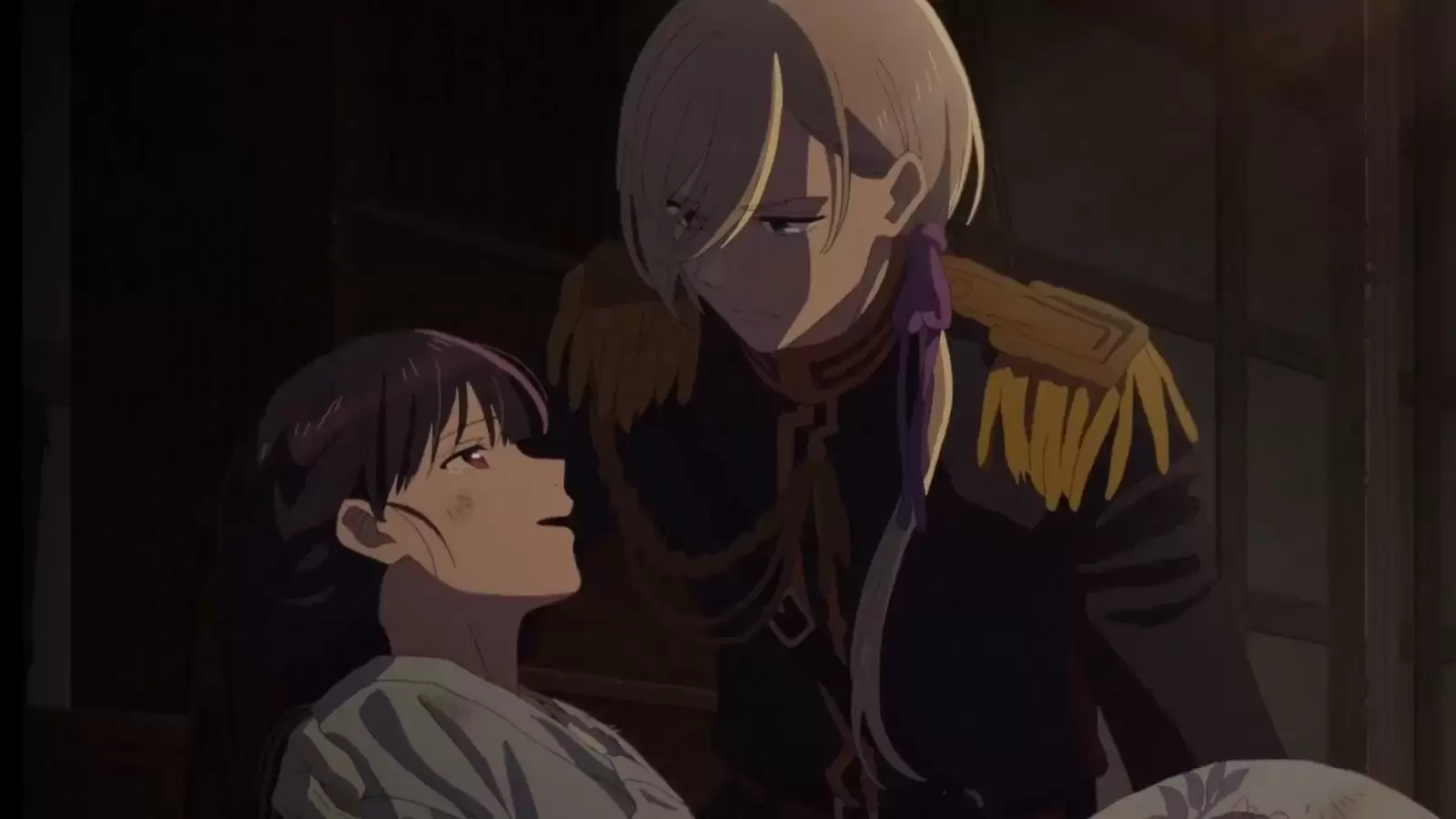
As Chiwa and Hokuto find the complexities of married life, they confront misunderstandings, jealousies, and external pressures that test their bond. The series goes into themes of trust, communication, and personal growth within the context of marriage.
The strength of “My Happy Marriage” lies in its character dynamics and development. Chiwa Takanashi is depicted as a determined and earnest protagonist who learns to assert herself and confront her insecurities throughout the series. Hokuto Mamiya, her enigmatic husband, initially appears aloof and distant but gradually reveals a more complex and caring side.
Supporting characters, including colleagues and family members, add depth to the narrative and contribute to Chiwa and Hokuto’s growth. Their interactions and evolving relationships provide engaging subplots that enrich the overarching storyline.
The manga follows the themes of love, intimacy, and emotional vulnerability within the framework of marriage. Chiwa and Hokuto’s relationship develops organically, allowing readers to witness their emotional journey as they finds challenges and confront their feelings for each other.
The series strikes a balance between romantic tension and heartfelt moments, capturing the intricacies of married life and the evolution of intimacy between its characters. Chiwa and Hokuto’s evolving dynamics resonate with readers seeking mature and nuanced portrayals of romance.
Maki Enjoji’s art style in “My Happy Marriage” is clean, expressive, and well-suited to the josei genre. The character designs are appealing, and the artwork effectively conveys the emotional nuances of the story. The manga has received positive reception for its engaging plot, likable characters, and realistic portrayal of adult relationships.
My Happy Marriage is a compelling manga series that follows the the intricacies of love, marriage, and personal growth. Through Chiwa and Hokuto’s evolving relationship, the series offers readers a mature and heartfelt depiction of romance within the context of adulthood. Whether you’re a fan of josei manga or enjoy character-driven narratives, “My Happy Marriage” offers a nice journey filled with emotional depth and genuine storytelling.
Memes of the Day
Tsuma ga Kirei ni Natta Wake

